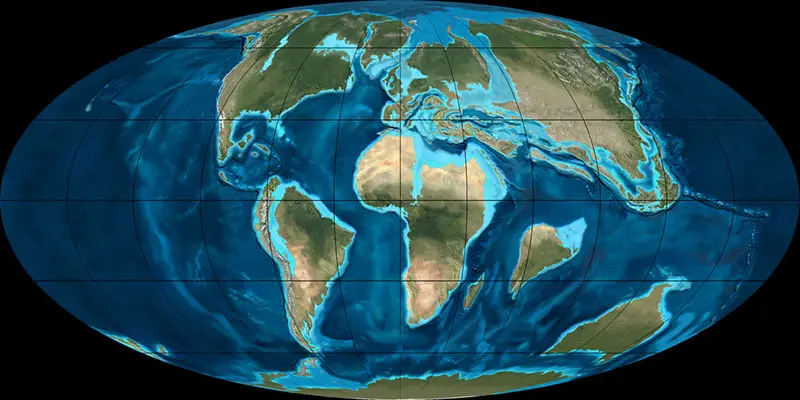†Palenochtha (Palaechthonidae)
Palenochtha ist eine Primatengattung innerhalb der Familie Palaechthonidae, deren 3 Mitglieder ab dem frühen Paläogen (Paläozän) im Danium lebten, das vor ungefähr 66 Millionen Jahren begann und bis vor 61,6 Millionen Jahren andauerte. Viele Überreste wurden in Vereinigte Staaten von Amerika (USA) gefunden.
Palenochtha aus der Familie Palaechthonidae (Ordnung Plesiadapiformes) war vom mittleren bis späten Paläozän in Nordamerika verbreitet.
Die Überreste der winzigen Primaten stammen aus Sedimenten, die zwischen 63,3 und 56,8 Millionen Jahre alt sind.
Palenochtha minor
Das Typusexemplar mit der Bezeichnung U.S.N.M. no. 9639 ist ein rechter Unterkiefer mit Prämolaren und Molaren (P4-M3) sowie vorderen Alveoli . Der Fund stammt aus dem Gidley Steinbruch (Fort Union Formation) in Montana, was Auskunft über sein Alter gibt: zwischen 63,3 und 60,2 Millionen Jahre.
| Sammlung | Kommentar zum Fundort | Epoche, Alter | Geologie, Formation | Kommentar zur Sammlung |
|---|---|---|---|---|
| Swain Quarry | Fort Union | CM loc 217 | ||
| Kommentar z. Taxonomie | ||||
| there are seven other localities in the same section, but none of the material is described\r\nMesodma pygmaea, i.e. sp. P, not listed, but mentioned by Krause 1977 |
| Physiologie | |
|---|---|
| Gewicht: | ? |
| Schwestertaxa | |
Palenochtha weissae
Der Fund stammt aus dem Swain Steinbruch in Wyoming (Fort Union Formation) und ist zwischen 63,3 und 60,2 Millionen Jahre alt.
| Sammlung | Kommentar zum Fundort | Epoche, Alter | Geologie, Formation | Kommentar zur Sammlung |
|---|---|---|---|---|
| Swain Quarry | Fort Union | CM loc 217 | ||
| Kommentar z. Taxonomie | ||||
| there are seven other localities in the same section, but none of the material is described\r\nMesodma pygmaea, i.e. sp. P, not listed, but mentioned by Krause 1977 |
Literatur
J. K. Rigby, Jr. 1980, Swain Quarry of the Fort Union Formation, Middle Paleocene (Torrejonian), Carbon County, Wyoming: geologic setting and mammalian fauna. Evolutionary Monographs. 3, p. 1 - 178K. D. Rose 1981, The Clarkforkian Land-Mammal Age and Mammalian Faunal Composition Across the Paleocene-Eocene Boundary. University of Michigan Papers on Paleontology. 26, p. 1 - 197
J. E. Hartman 1986, Paleontology and biostratigraphy of lower part of Polecat Bench Formation, southern Bighorn Basin, Wyoming. Contributions to Geology, University of Wyoming. 24:1, p. 11 - 63
G. F. Gunnell 1989, Evolutionary History of Microsyopoidea (Mammalia, ?Primates) and the Relationship Between Plesiadapiformes and Primates. University of Michigan Papers on Paleontology. 27:1, p. 1 - 157
C. S. Scott 2003, Late Torrejonian (middle Paleocene) mammals from south central Alberta, Canada. Journal of Paleontology. 77:4, p. 745 - 768
